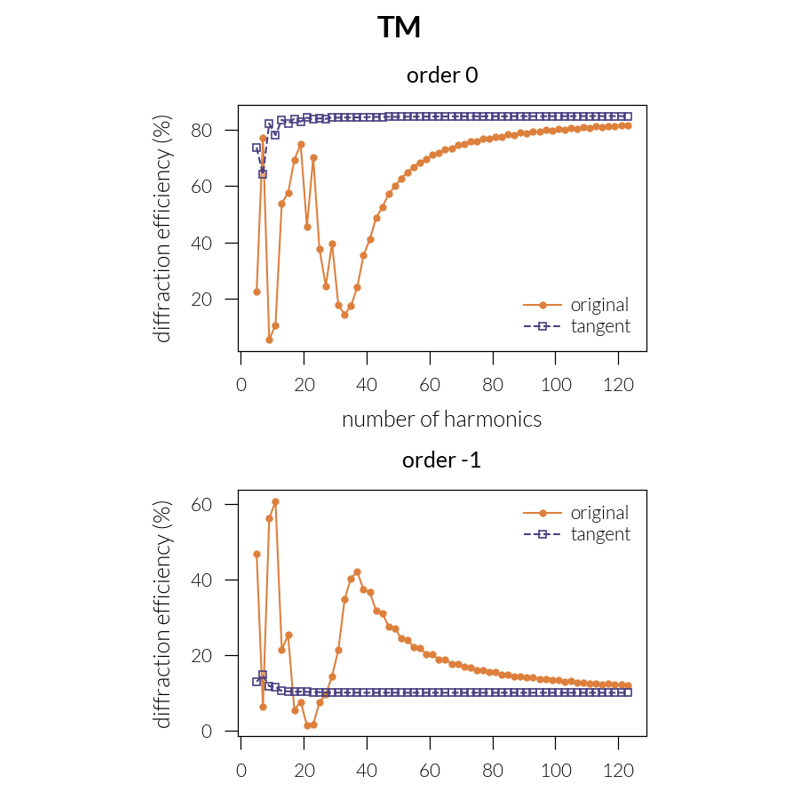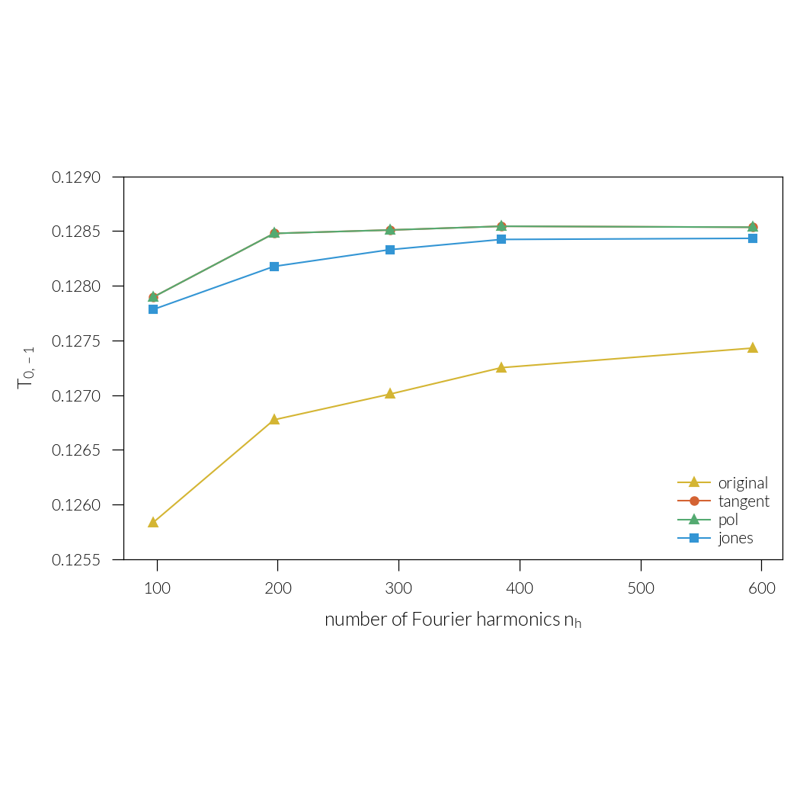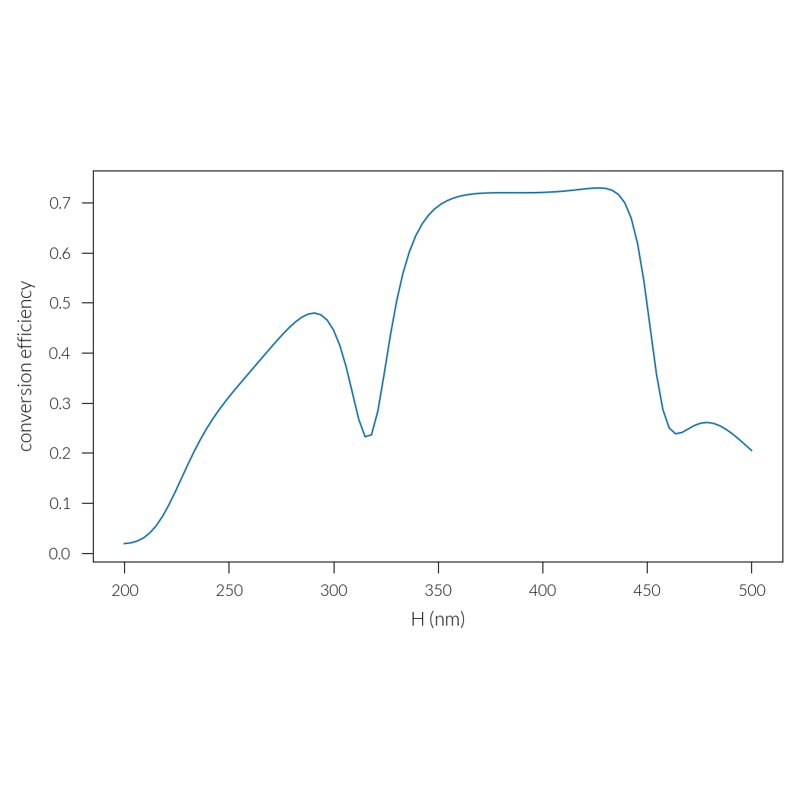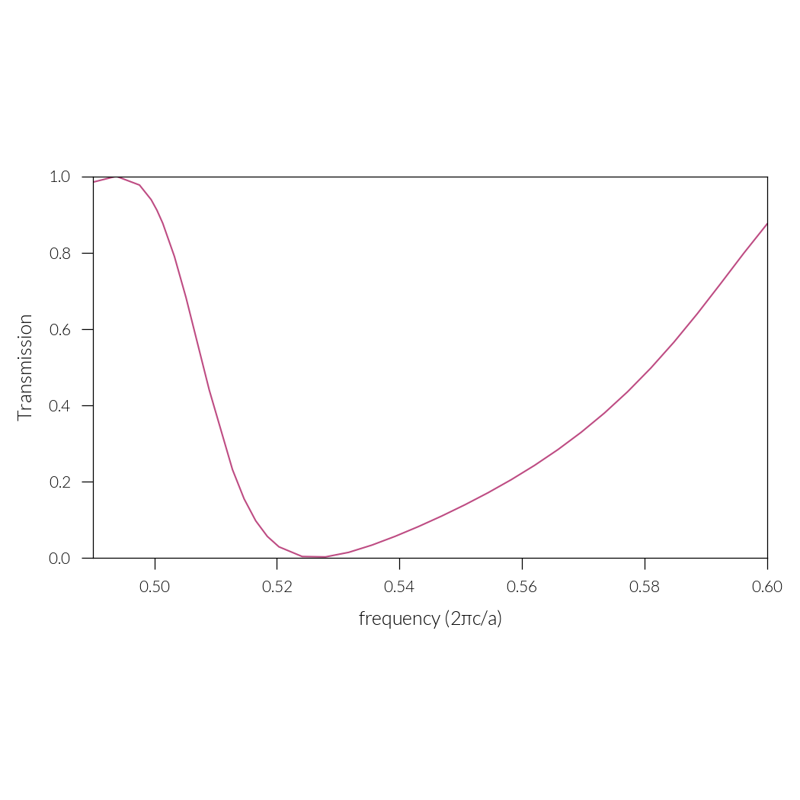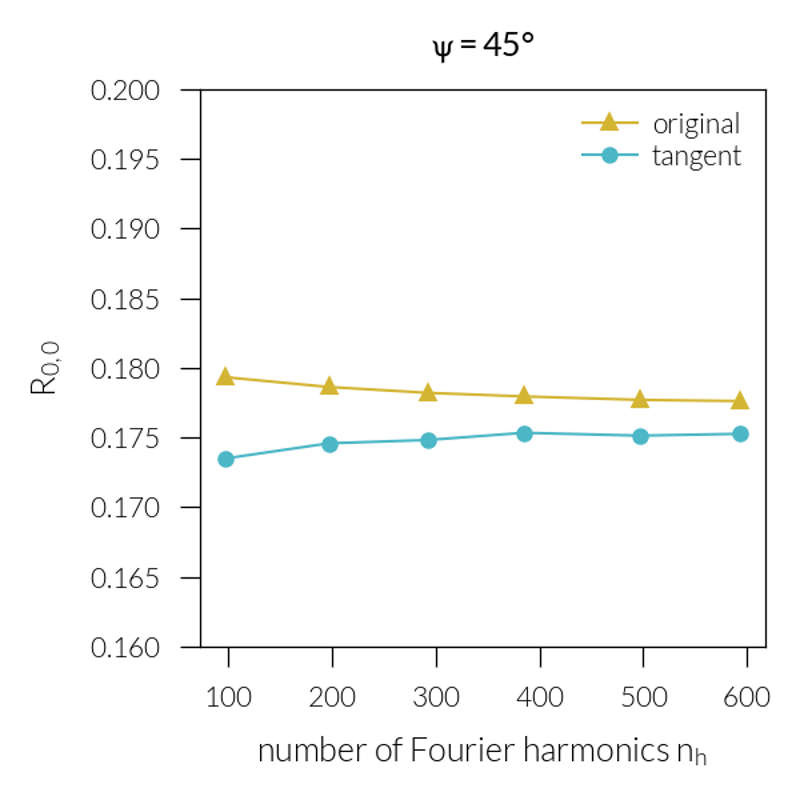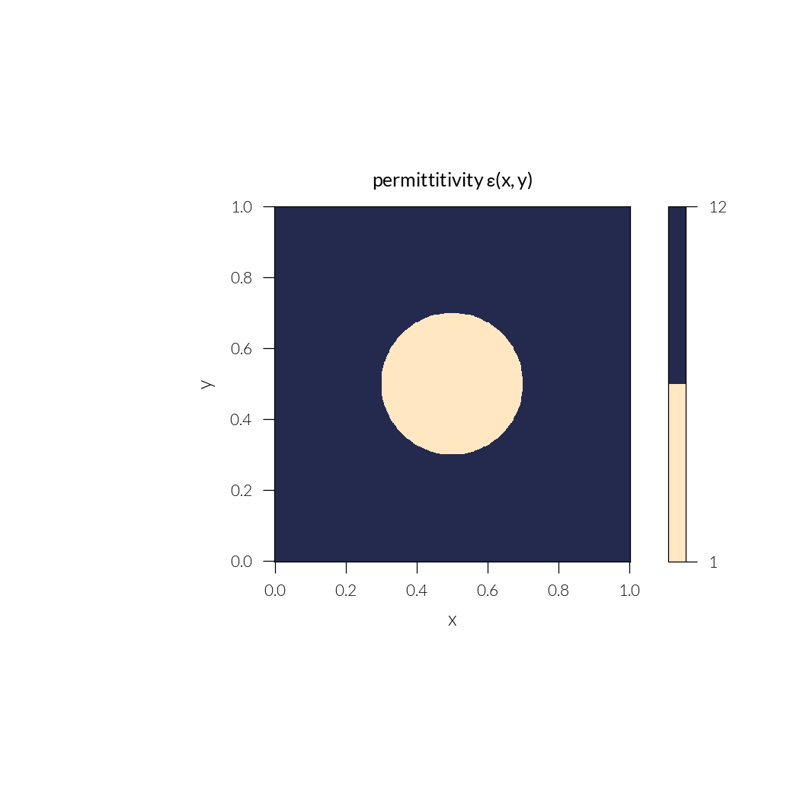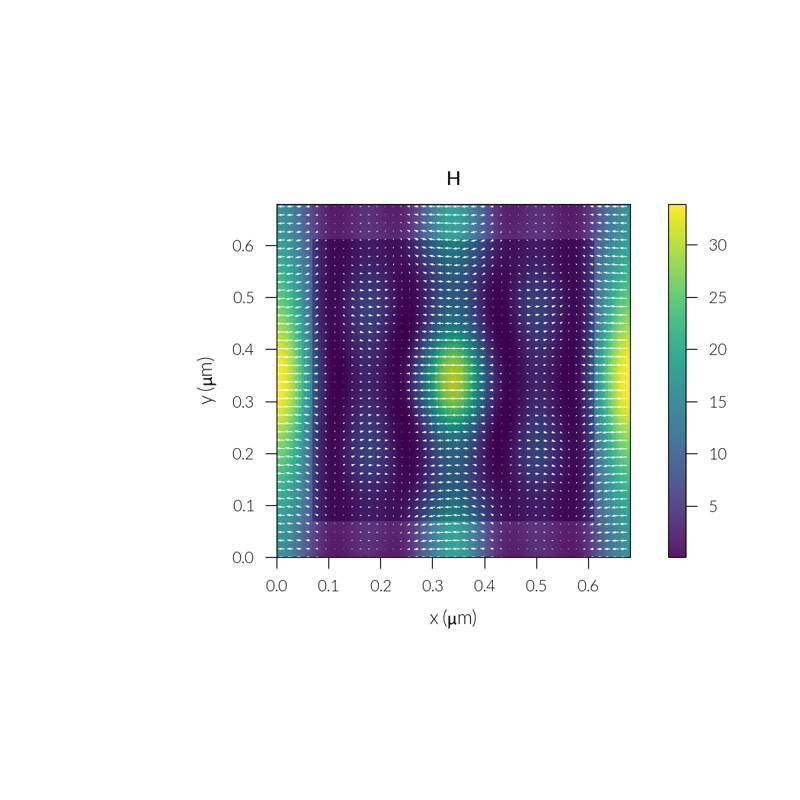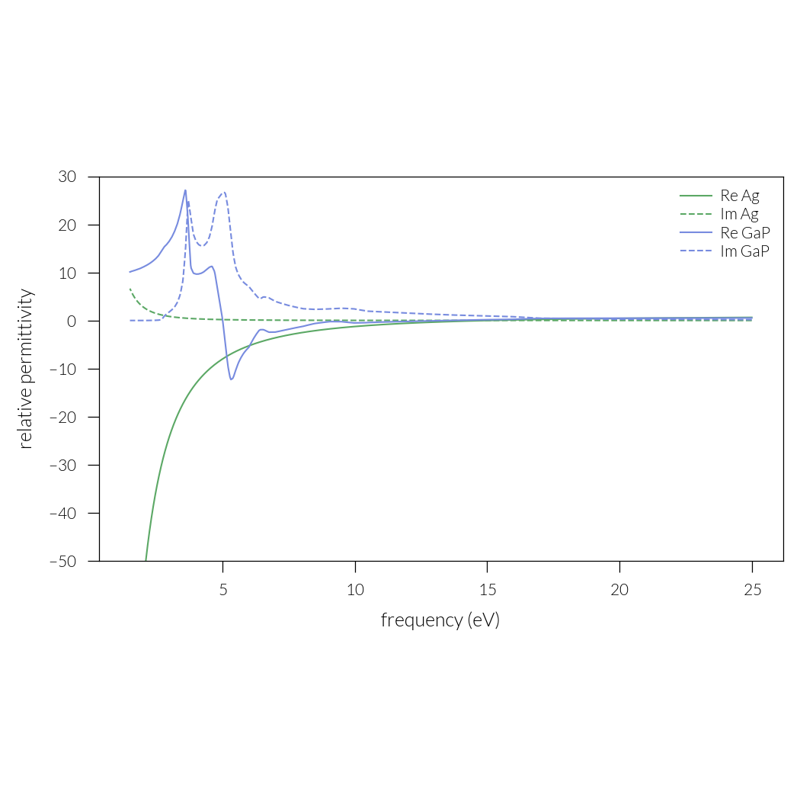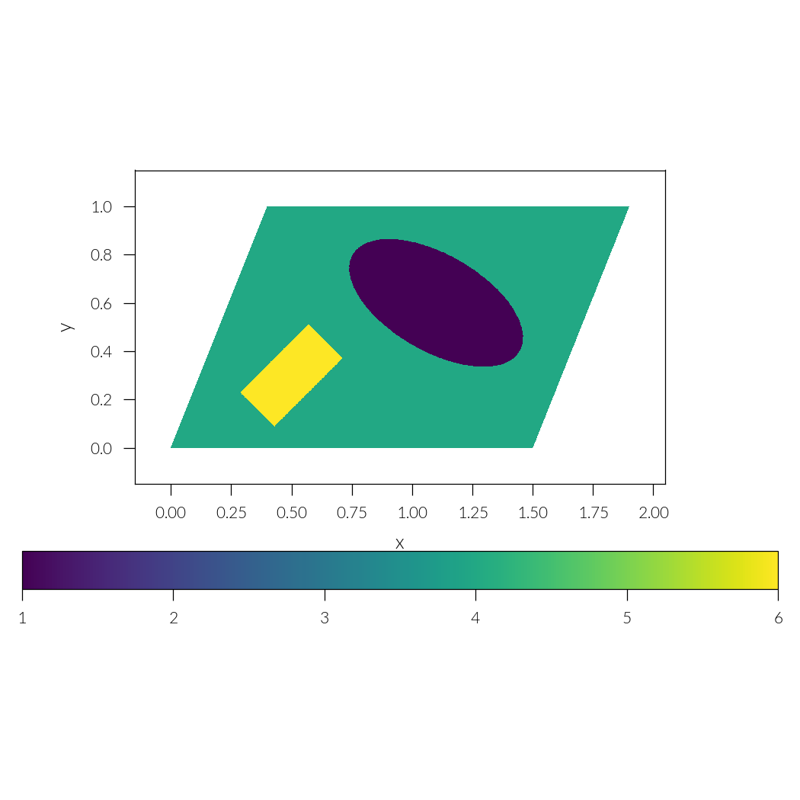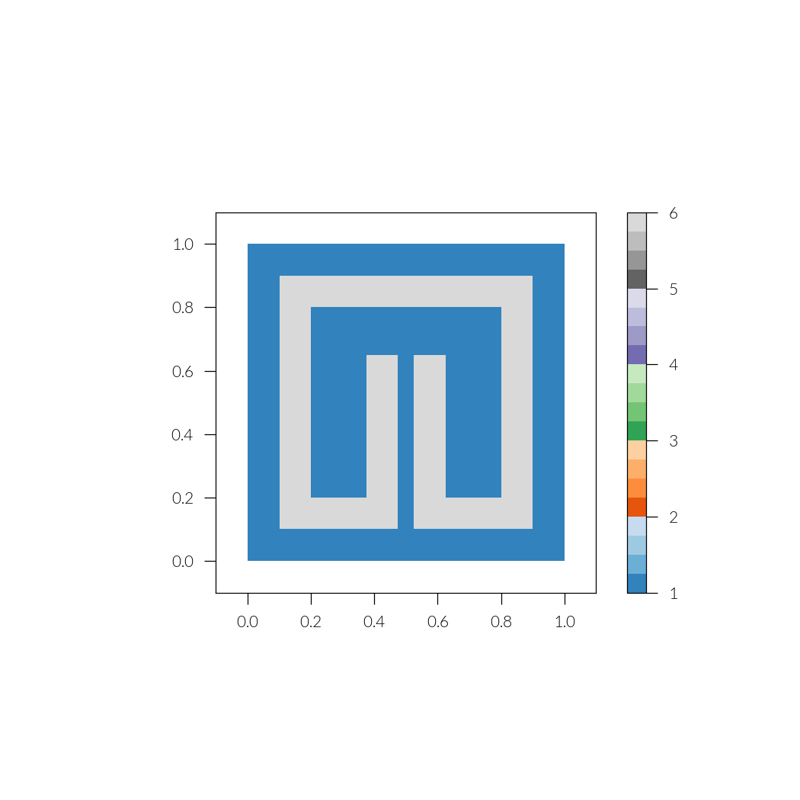Simulation#
- class nannos.Simulation(layers, excitation, nh=100, formulation='original')[source]#
Main simulation object.
- Parameters:
- build_matrix(layer)[source]#
Build the matrix for a given layer.
- Parameters:
layer (int or Layer) – The layer to build the matrix for. If int, the layer is identified by its index.
- Returns:
The layer with the computed matrix
- Return type:
Layer
- diffraction_efficiencies(orders=False, complex=False, return_dict=False)[source]#
Compute the diffraction efficiencies.
- Parameters:
orders (bool) – If
True, returns diffracted orders, else returns the sum of reflection and transmission for all propagating orders (the default isFalse).complex (bool) – If
True, return complex valued quantities corresponding to ampitude related coefficients. (the default isFalse).return_dict (bool) – If
True, return quantities as nested dictionaries with keys corresponding to diffraction orders. This works only iforders=True(the default isFalse).
- Returns:
The reflection and transmission
RandT.- Return type:
- get_Efield_grid(layer_index, z=0, shape=None, component='all')[source]#
Retrieve the electric field in real space for a given layer.
- Parameters:
- Returns:
The electric field in real space. The shape of the array depends on the arguments.
- Return type:
array
- get_Hfield_grid(layer_index, z=0, shape=None, component='all')[source]#
Retrieve the magnetic field in real space for a given layer.
- Parameters:
- Returns:
The magnetic field in real space. The shape of the array depends on the arguments.
- Return type:
array
- get_field_fourier(layer_index, z=0)[source]#
Compute the fields in k-space for a given layer and z position.
- get_field_grid(layer_index, z=0, shape=None, field='all', component='all')[source]#
Retrieve the fields in real-space for a given layer.
- Parameters:
layer_index (int) – The layer index
z (float, optional) – The z coordinate of the field, by default 0
shape (tuple, optional) – The shape of the output array, by default None
field (str, optional) – The field type, by default “all”. Must be one of “all”, “E” or “H”
component (str, optional) – The component of the field, by default “all”. Must be one of “all”, “x”, “y” or “z”
- Returns:
The fields in real space. The shape of the array depends on the arguments.
- Return type:
array
- get_ifft_amplitudes(amplitudes, shape, axes=(0, 1))[source]#
Compute the inverse Fourier transform of the amplitudes in k-space.
- get_order_index(order)[source]#
Return the index of the order (m,n) in the harmonics array.
- Parameters:
order (tuple or int) – The order to find the index of. If int, the second element of the tuple is assumed to be 0.
- Returns:
The index of the order in the harmonics array.
- Return type:
- Raises:
ValueError – If the order is not a tuple of two integers for bi-periodic gratings.
- get_z_poynting_flux(layer, an, bn)[source]#
Compute the z-component of the Poynting vector.
- Parameters:
layer (Layer) – The layer
an (array) – The amplitudes of the forward fields
bn (array) – The amplitudes of the backward fields
- Returns:
forward (array) – The z-component of the Poynting vector of the forward fields
backward (array) – The z-component of the Poynting vector of the backward fields
- get_z_stress_tensor_integral(layer_index, z=0)[source]#
Compute the z-component of the stress tensor integral for the given layer at a given z position.
- plot_structure(plotter=None, nper=(1, 1), dz=0.0, null_thickness=None, **kwargs)[source]#
Plot the structure.
- Parameters:
plotter (function, optional) – Custom function to plot the structure. Signature should be
plotter(simulation, nper, dz, null_thickness, **kwargs).nper (tuple of int, optional) – Number of periods in the x and y direction.
dz (float, optional) – The distance of the structure from the z=0 plane.
null_thickness (float, optional) – The thickness of the null layers at the top and bottom of the structure.
- Return type:
None
- reset(param='all')[source]#
Reset some or all of the simulation.
- Parameters:
param (str, optional) – The parameter to reset. If
"S", the S matrix is reset. If"solve", the simulation is reset to unsolved state. If"all", both are reset. The default is"all".- Return type:
None
- solve()[source]#
Solve the eigenproblem for all layers in the stack.
This method loops over all layers in the stack and calls the
build_matrixandsolve_eigenproblemmethods for each layer. The solved layers are stored in thelayersattribute of the simulation object.Notes
This method is called automatically by the
runmethod of the simulation object.- Return type:
None

